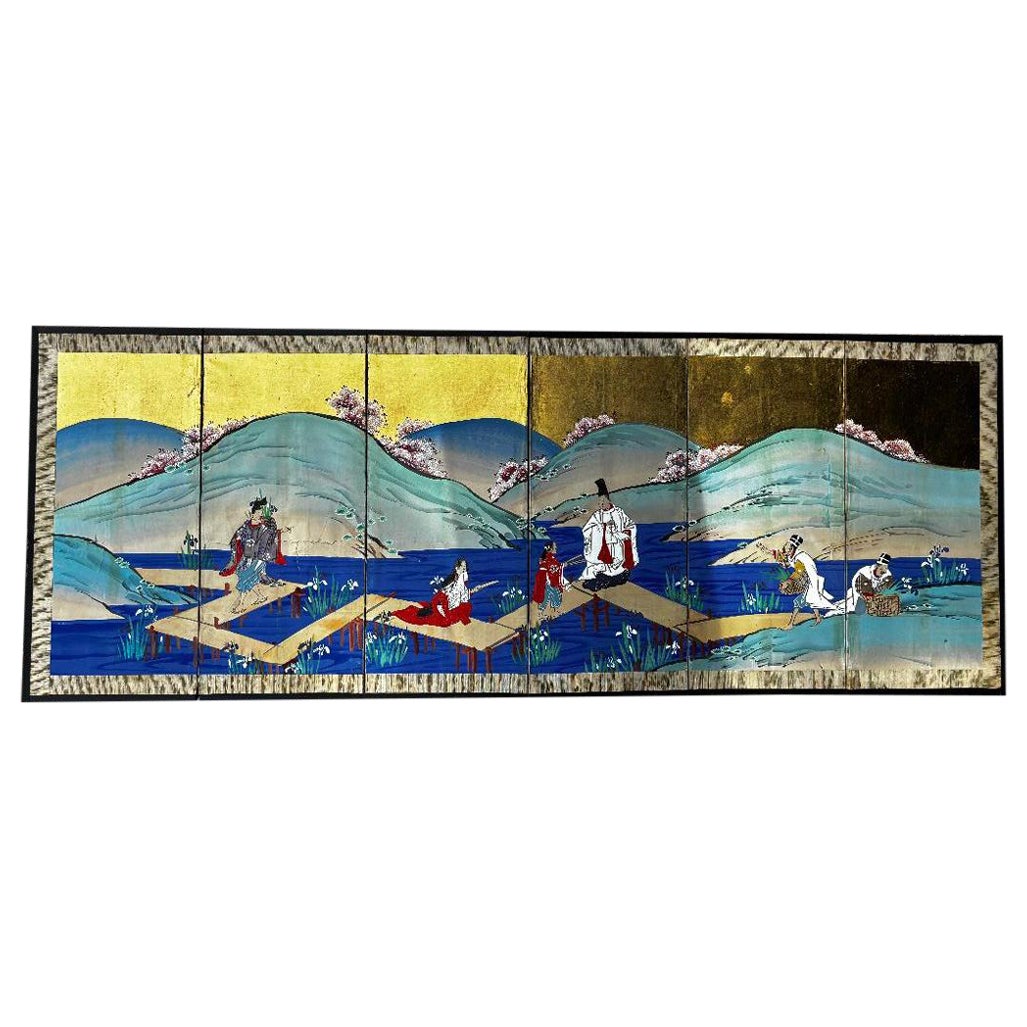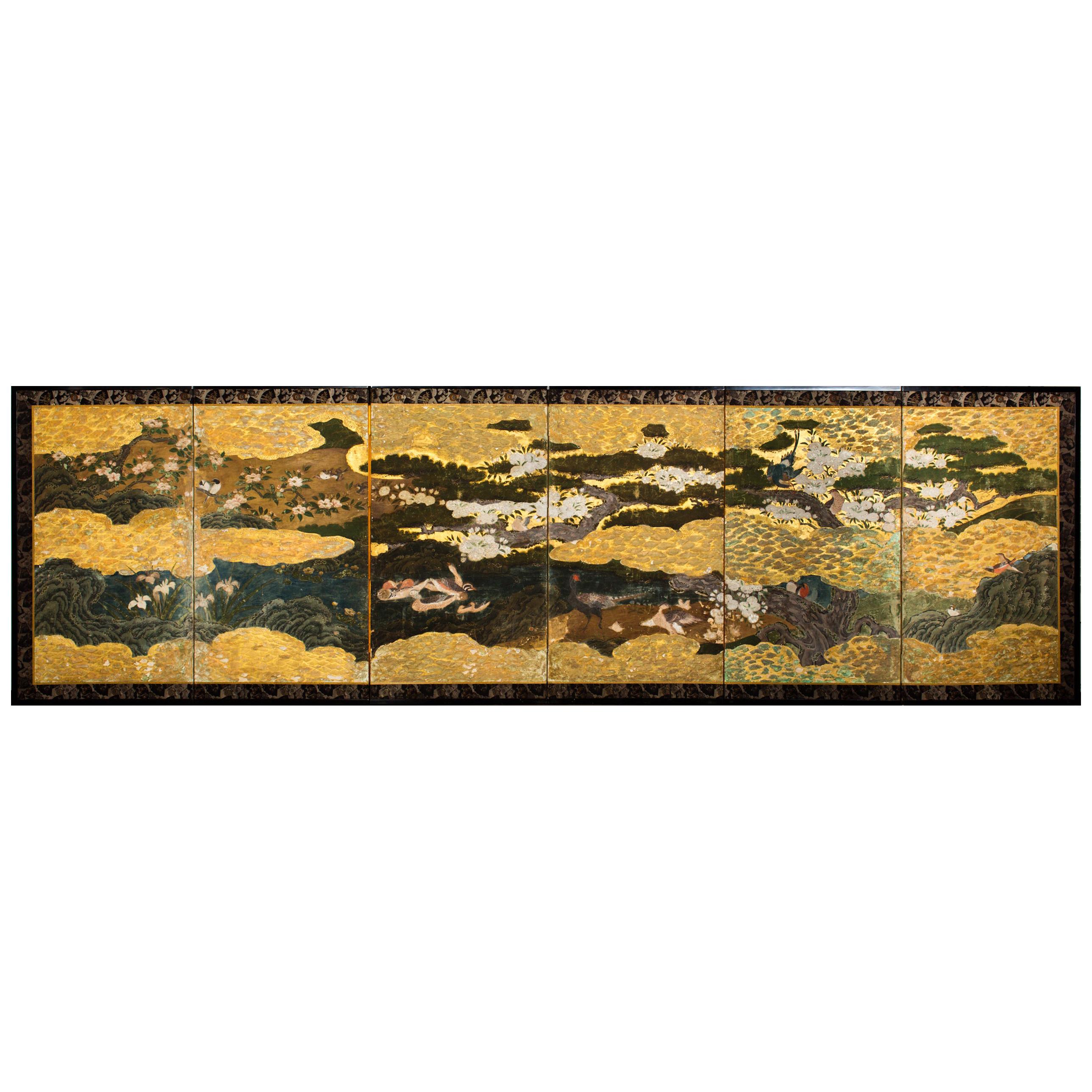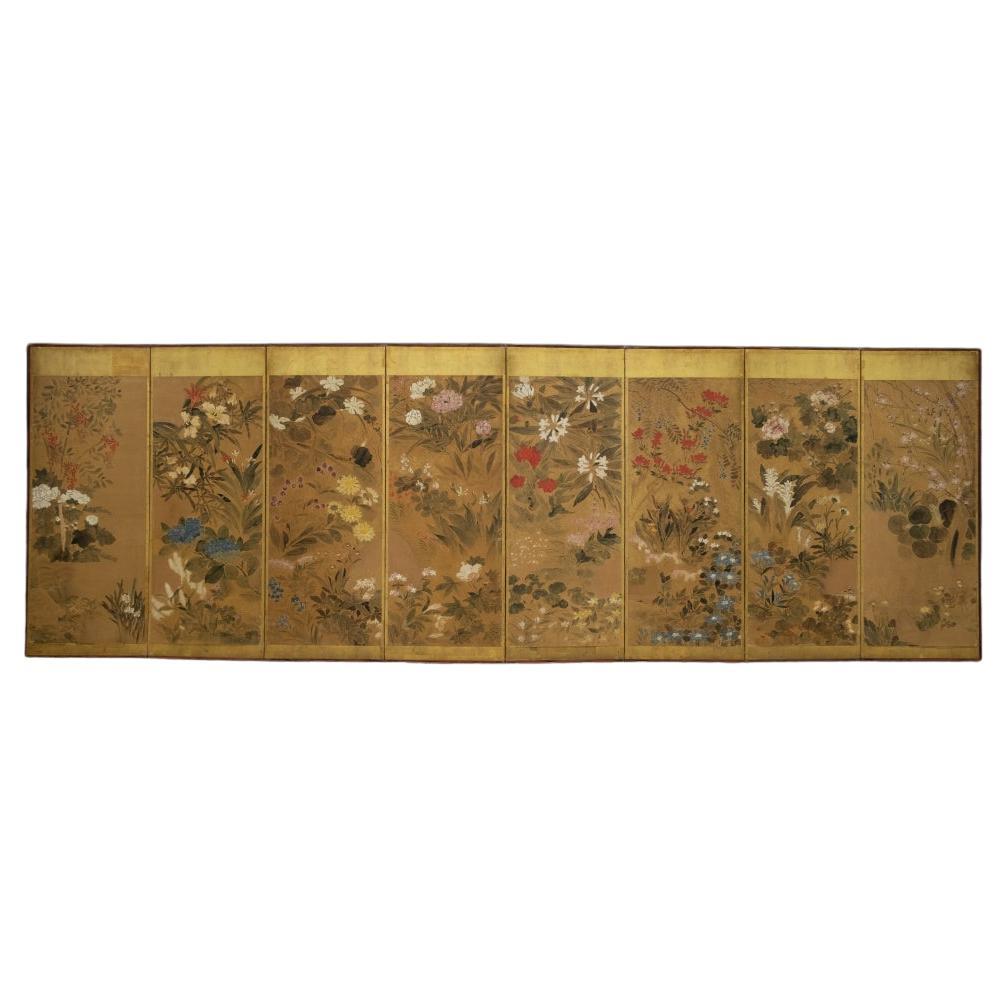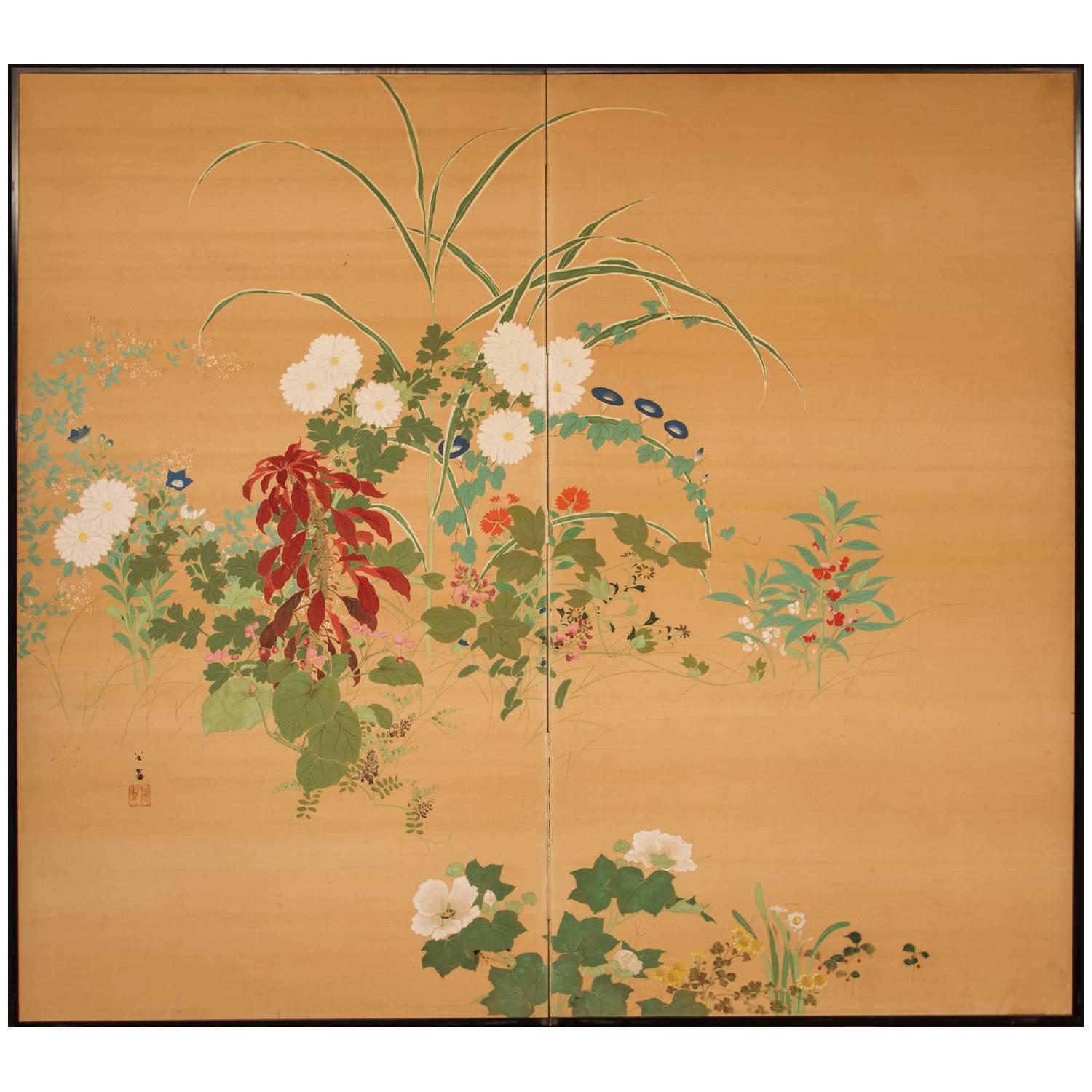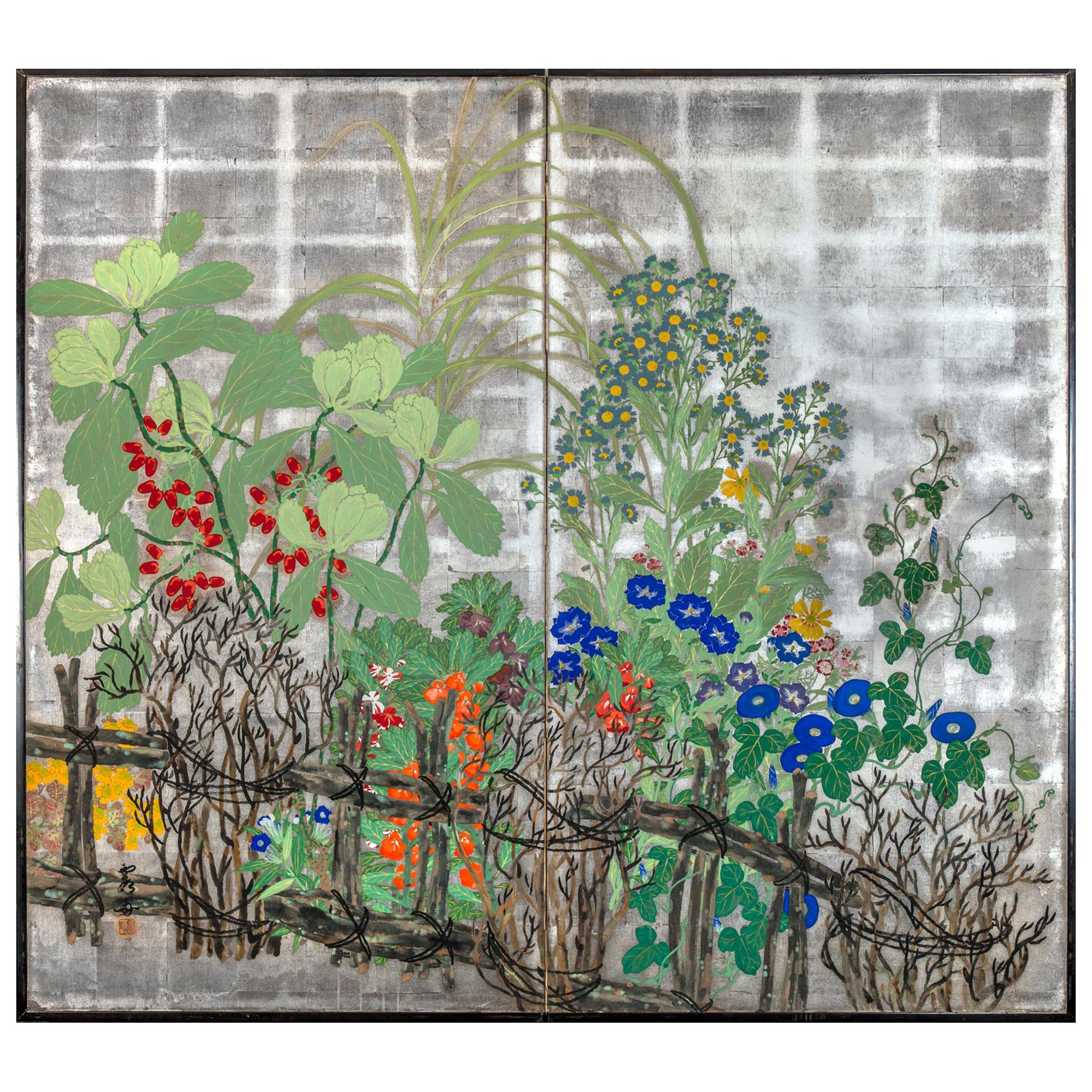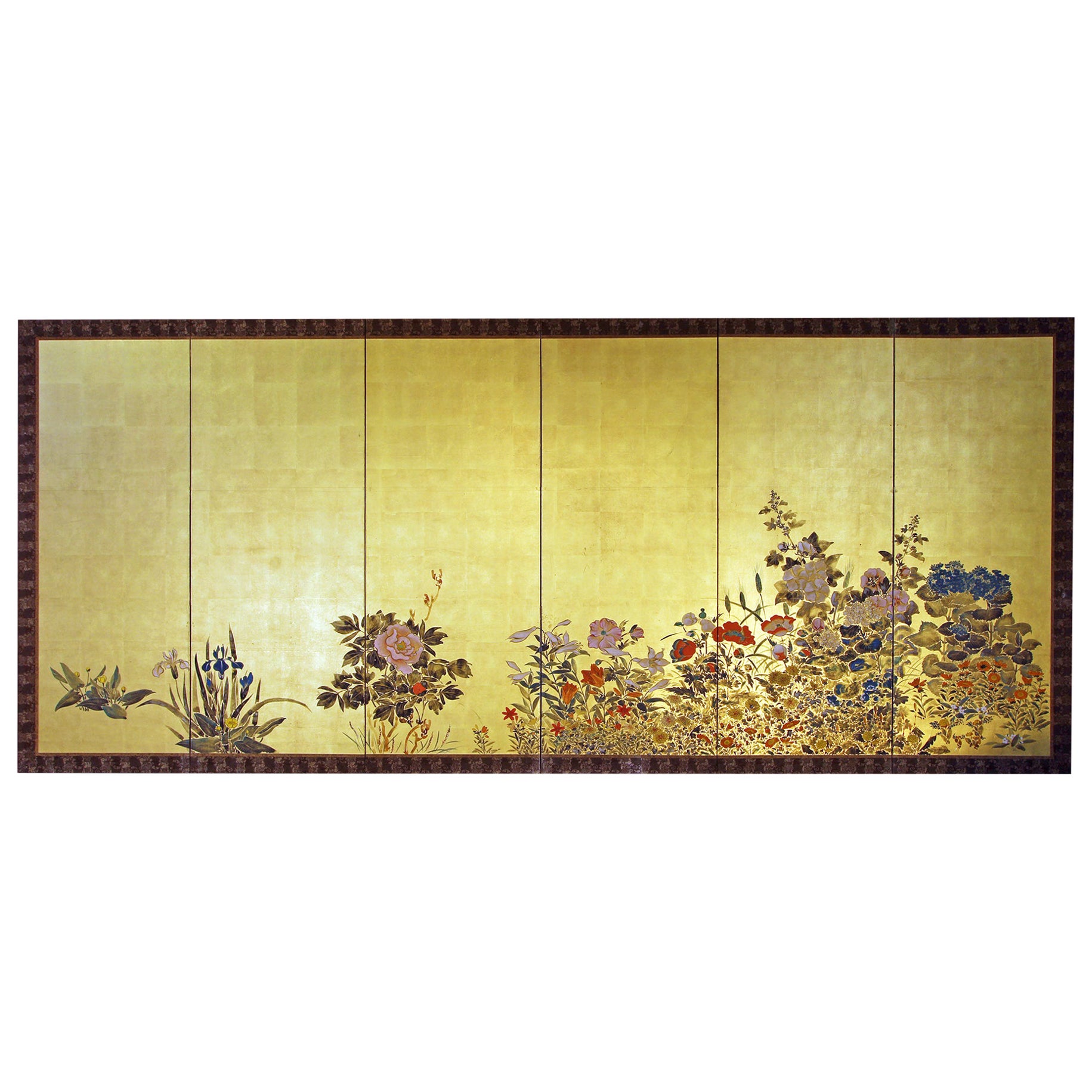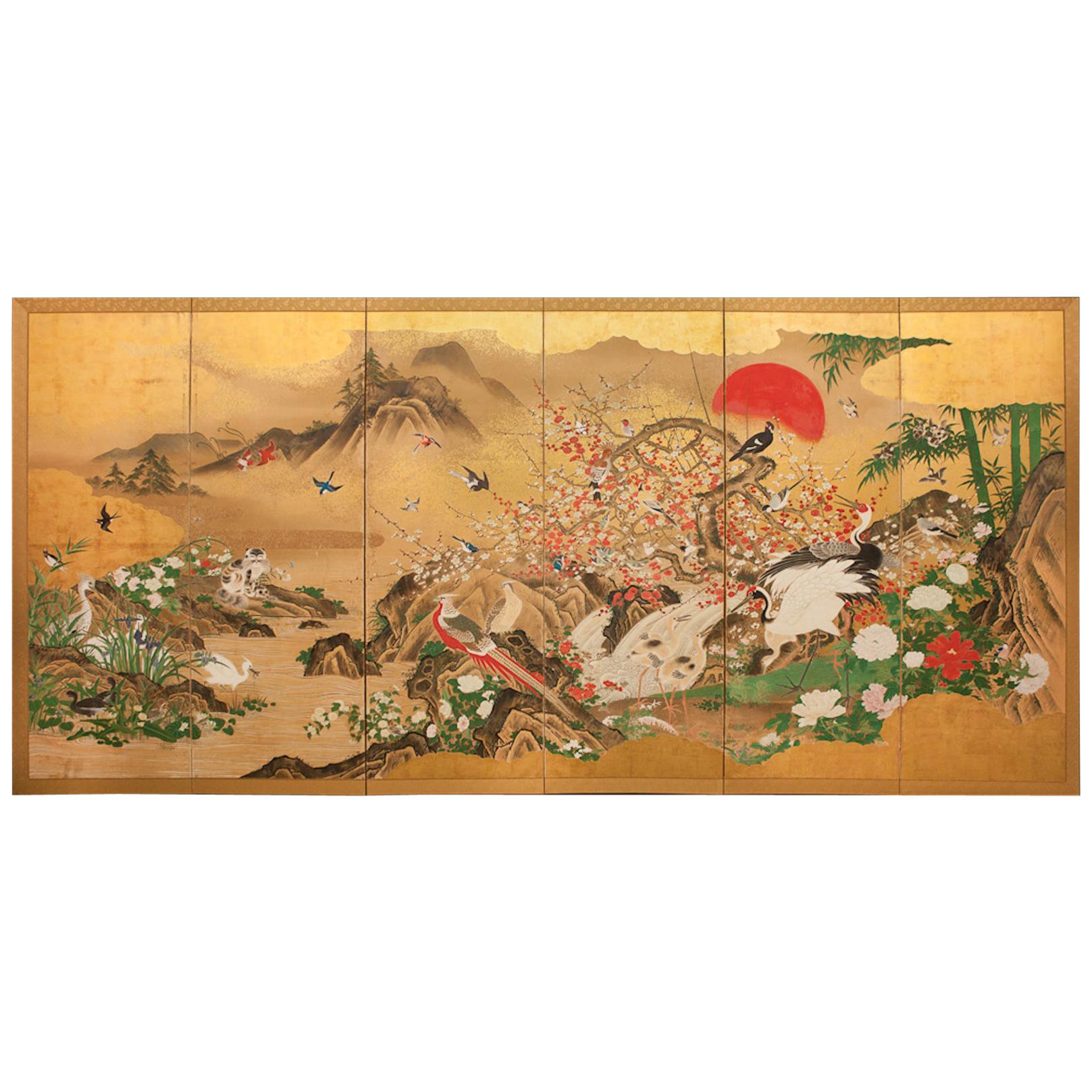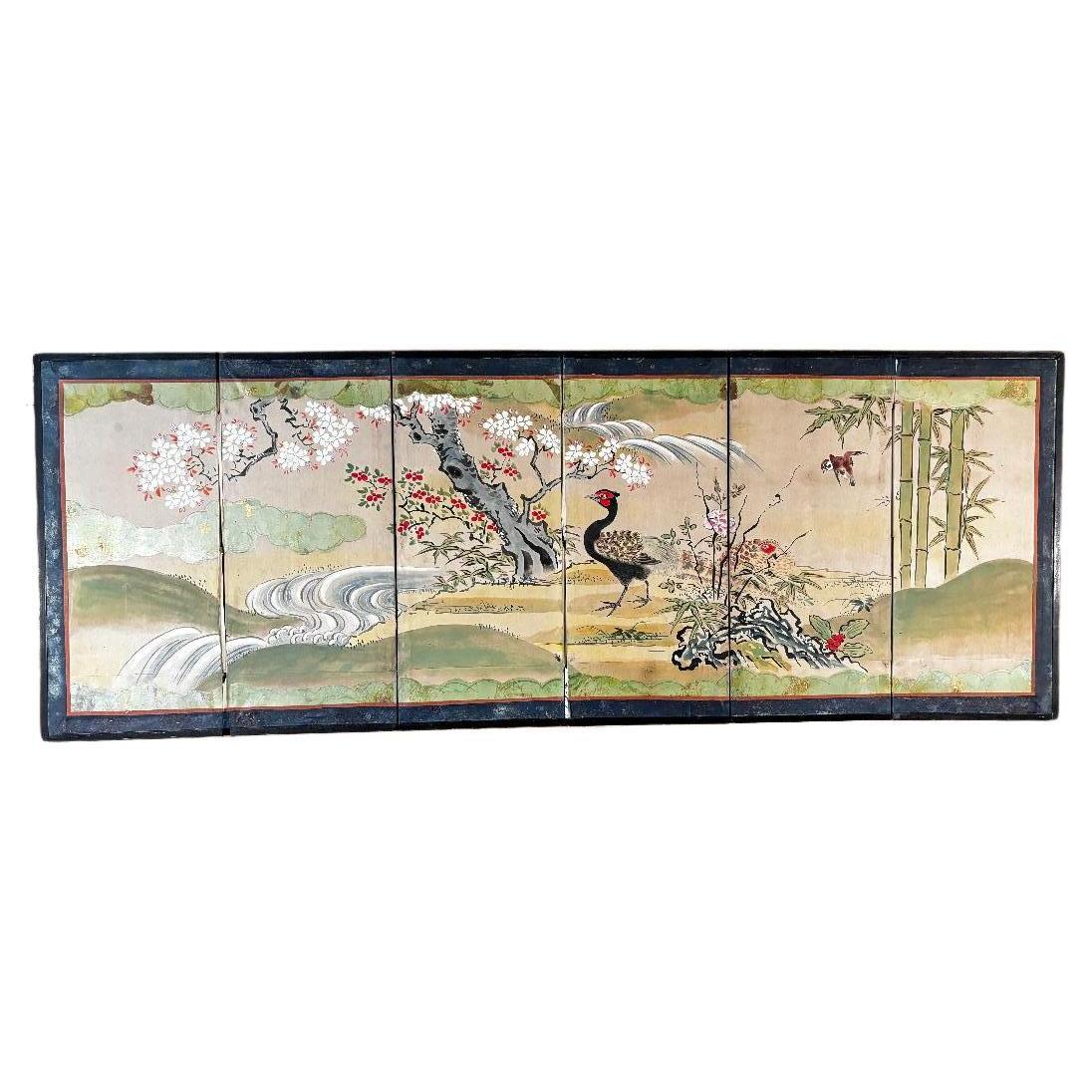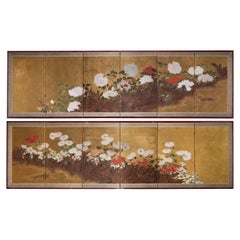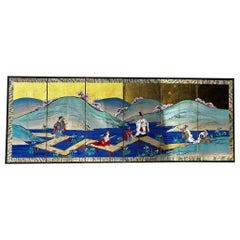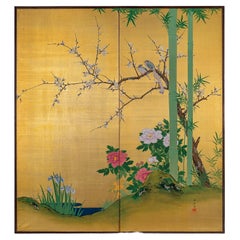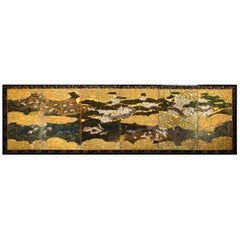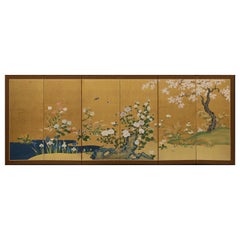
Screen with Spring and Summer Flowers
View Similar Items
Want more images or videos?
Request additional images or videos from the seller
1 of 10
Screen with Spring and Summer Flowers
About the Item
- Dimensions:Height: 42.13 in (107 cm)Width: 112.6 in (286 cm)Depth: 0.79 in (2 cm)
- Materials and Techniques:
- Place of Origin:
- Period:
- Date of Manufacture:circa 1850
- Condition:
- Seller Location:Milano, IT
- Reference Number:1stDibs: LU4250217850511
About the Seller
5.0
Recognized Seller
These prestigious sellers are industry leaders and represent the highest echelon for item quality and design.
Established in 2005
1stDibs seller since 2018
10 sales on 1stDibs
Typical response time: 1 hour
More From This SellerView All
- Pair of Six-Panel Folding Screens with Peonies and Other FlowersLocated in Milano, ITA pair of six-panel folding screens with peonies and other flowers 19th century Each 72.5 by 241 cm Small and elegant screens with an ideal scene depicting peonies and other flower species...Category
Antique 19th Century Japanese Paintings and Screens
MaterialsPaper
- Pair of Japanese Two-Fold Screens with Flower Arrangements and Rare BirdsLocated in Milano, ITKaramono with flower arrangements and rare birds Edo period, 18th century Pair of two-panel folding screens Ink, colors, gofun and gold leaf on paper Each 170 by 165 cm ...Category
Antique 18th Century Japanese Paintings and Screens
MaterialsPaper
- Japanese Folding Screen with a Spring Landscape, Kano School, 19th CenturyLocated in Milano, ITThe scene is dominated by a plum tree in bloom under which a couple of paradise birds is courting. The screen is crossed by a luxuriant creek, a typical feature of the springtime.Category
Antique 19th Century Japanese Paintings and Screens
MaterialsPaper
- Pair of Japanese Screens with Flowers of the Four Seasons, 19th CenturyLocated in Milano, ITThis pair of screens belongs to a genre of lyrical paintings of flowers, grasses, and other plants that flourished around the middle of the 17th century and became a specialty of the Sôtatsu studio. The use of a rather complex composition of clusters of flowers and the puddling of ink was initiated by Tawaraya Sôtatsu, the founder of the Rimpa School, who was active from 1600 until 1642. The screens are abstract and decorative but there is, at the same time, a keen sense of naturalism not only in the attention to accurate detail but in the profusion of vegetation. The passage of the year is symbolized by the variety of plants that bloom in different seasons. The tarashikomi - here used on leaves, petals and trunks - is a Classic Rinpa technique in which pale black ink or a color is brushed onto an area of a painting and then either darker ink, or the same or a contrasting color, is dropped into the first before it has completely dried, creating an effect of pooled colors with softly blurred edges. Its delicacy, preciousness, and effeminacy are identified with the over-refinement of its patrons, while the vigor, monochromatic discipline, sharp observation, and virile forms of the Kano school are a testament to the vitality of the rising warrior class. The plants are almost all identifiable: in the summer-spring part, you can find wheat, buttercups, irises, begonias, hydrangeas, coral bells...Category
Antique 19th Century Japanese Paintings and Screens
MaterialsPaper
- Japanese Two-Panel Screen with Scenes at the Pleasure Quarters, 18th CenturyLocated in Milano, ITIn the pleasure districts, the stringent codes were meant to be forgotten. In this painting, some clients are watching from outside the teahouse, while some are entering, one of them...Category
Antique 18th Century Japanese Paintings and Screens
MaterialsPaper
- Painting by Maeda Josaku (Japan, 1926 – 2007), Paysage Humain N° 14, 1960Located in Milano, ITSigned: Josaku Meda. 60. Singed on the back: "Paysage humain" N°14 / 7.1960 / Josaku MAEDA / à Paris Exhibitions: Turin (Italy), Gissi Gallery, Collettiv...Category
20th Century Japanese Paintings and Screens
MaterialsCanvas
You May Also Like
- Japanese Brilliant Spring Summer Gold ScreenLocated in South Burlington, VTJust acquired in Kyoto, Japan A beautifully rendered smaller scale Japanese gold leaf six-panel folding screen byobu conceived in a convenient size 20 inches high and 54 inches leng...Category
Early 20th Century Japanese Meiji Paintings and Screens
MaterialsPaper
- Japanese Two Panel Screen: Summer FlowersLocated in Hudson, NYScreen depicts Summer flowers and birds on gilded silk. Signature reads: Konishi Fukunen. Notes about Artist: Konishi Fukunen (1887-1959) was born the second son of the Paper mounting specialist Konishi Uhei in Takeo, Fukui prefecture in the mid Meiji period. In 1902 he was sent to Kyoto to study painting under Suzuki Shonen...Category
Mid-20th Century Japanese Paintings and Screens
MaterialsSilk
- Japanese Six Panel Screen Spring into SummerLocated in Hudson, NYMid-Edo period, 18th century painting with gold leaf and mineral pigments. A summer landscape depicting summer flowers and exotic birds, accented with an abstract cloud design. Miner...Category
Antique 18th Century Japanese Edo Paintings and Screens
MaterialsGold Leaf
- Summer Flowers Eight-Panel Botanical ScreenLocated in Fukuoka, JPSummer Flowers Eight-Panel Botanical Screen Period: Late Edo Size: 352x117 cm (138x46 inches) SKU: PTA42 Immerse yourself in the splendor of late Edo Japan with our breathtaking eig...Category
Antique 18th Century Japanese Edo Paintings and Screens
MaterialsGold Leaf
- Japanese Two-Panel Screen Spring FlowersLocated in Hudson, NYA vibrant celebration of spring using a colorful ensemble of coxcomb, irises, lilies, hybiscus, and a blossoming cherry tree. Great examples of "tarashikomi" or "painting-in", a Rim...Category
Vintage 1930s Japanese Showa Paintings and Screens
MaterialsSilk, Paper
- Japanese Four Panel Screen: Early Spring Into SummerLocated in Hudson, NYJapanese Four Panel Screen: Early Spring Into Summer, Meiji period (1868 -1912) painting of plum in bloom with red camellias on the right and peony and thistle on the left. A clutc...Category
Antique Early 1900s Japanese Meiji Paintings and Screens
MaterialsGold Leaf
Recently Viewed
View AllMore Ways To Browse
Antique Edo Period Kano Screen
Edo Gold Screen Japan Spring
Japanese Screen Double
Chinese Carved Floor Screen
Folding Japanese Screen Momoyama
Stone Inlay Screen
Japanese Goldfish
Egret Screens
Asian Art And Screens
Japanese Screen 1 Panel 2 Panels
Japanese Two Panel Screen Cherry Blossoms
Rajasthan Painted Screen
Hardstone Screen
Japanese Two Panel Rimpa
Korean Silk Panels
Maruyama Okyo
Antique Chinese Wood Gilt Emperor
Antique Japanese Calligraphy Brush
